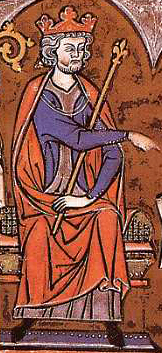
James I the Conqueror was King of Aragon, Count of Barcelona and Lord of Montpellier from 1213 to 1276; King of Majorca from 1231 to 1276; and Valencia from 1238 to 1276. His long reign of 62 years is not only the longest of any Iberian monarch, but one of the longest monarchical reigns in history, ahead of Hirohito but remaining behind Queen Victoria and Ferdinand III of Naples and Sicily. He saw the expansion of the Crown of Aragon in three directions: Languedoc to the north, the Balearic Islands to the southeast, and Valencia to the south. By a treaty with Louis IX of France, he achieved the renunciation of any possible claim of French suzerainty over the County of Barcelona and the other Catalan counties, while he renounced northward expansion and taking back the once Catalan territories in Occitania and vassal counties loyal to the County of Barcelona, lands that were lost by his father Peter II of Aragon in the Battle of Muret during the Albigensian Crusade and annexed by the Kingdom of France, and then decided to turn south. His great part in the Reconquista was similar in Mediterranean Spain to that of his contemporary Ferdinand III of Castile in Andalusia. One of the main reasons for this formal renunciation of most of the once Catalan territories in Languedoc and Occitania and any expansion into them is the fact that he was raised by the Knights Templar crusaders, who had defeated his father fighting for the Pope alongside the French, so it was effectively forbidden for him to try to maintain the traditional influence of the Count of Barcelona that previously existed in Occitania and Languedoc.
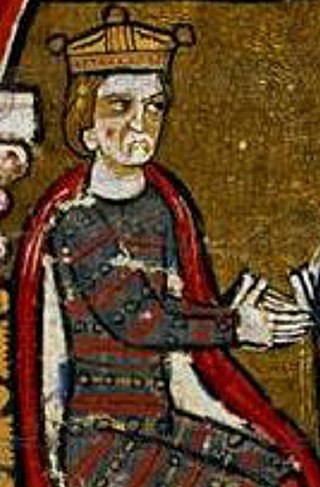
Peter II the Catholic was the King of Aragon and Count of Barcelona from 1196 to 1213.

Alfonso II, called the Chaste or the Troubadour, was the King of Aragon and, as Alfons I, the Count of Barcelona from 1164 until his death. The eldest son of Count Ramon Berenguer IV of Barcelona and Queen Petronilla of Aragon, he was the first King of Aragon who was also Count of Barcelona. He was also Count of Provence, which he secured from Douce II and her would-be father-in-law Raymond V, Count of Toulouse, from 1166 until 1173, when he ceded it to his brother, Ramon Berenguer III. His reign has been characterised by nationalistic and nostalgic Catalan historians as l'engrandiment occitànic or "the Pyrenean unity": a great scheme to unite various lands on both sides of the Pyrenees under the rule of the House of Barcelona.
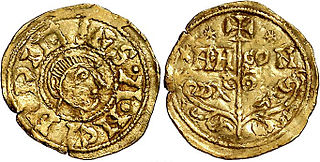
Sancho Ramírez was King of Aragon from 1063 until 1094 and King of Pamplona from 1076 under the name of Sancho V. He was the eldest son of Ramiro I and Ermesinda of Bigorre. His father was the first king of Aragon and an illegitimate son of Sancho III of Pamplona. He inherited the Aragonese crown from his father in 1063. Sancho Ramírez was chosen king of Pamplona by Navarrese noblemen after Sancho IV was murdered by his siblings.

William VIII, born Guy-Geoffrey (Gui-Geoffroi), was duke of Gascony (1052–1086), and then duke of Aquitaine and count of Poitiers between 1058 and 1086, succeeding his brother William VII (Pierre-Guillaume).
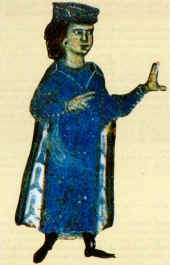
William IX, called the Troubadour, was the Duke of Aquitaine and Gascony and Count of Poitou between 1086 and his death. He was also one of the leaders of the Crusade of 1101. Though his political and military achievements have a certain historical importance, he is best known as the earliest troubadour—a vernacular lyric poet in the Occitan language—whose work survives.

The following is a list of lords of Montpellier:
Eudokia Komnene was a relative of Byzantine Emperor Manuel I Komnenos, and wife of William VIII of Montpellier.

Marie of Montpellier was Lady of Montpellier and by her three marriages Viscountess of Marseille, Countess of Comminges and Queen of Aragon.

Sancho, also spelled Sanç or Sanche, was a Catalano-Aragonese nobleman and statesman, the youngest son of Queen Petronilla of Aragon and Count Raymond Berengar IV of Barcelona. He was at different times the count of Cerdanya (c.1175–1188), Provence (1181–1185), Gévaudan, Rodez and Carlat (1183–1185), and Roussillon (1208–1212). He served as the regent of Provence from 1209 until 1218 during the minority of Count Raymond Berengar IV, and as regent of Aragon from 1214 until 1218, during the minority of King James I.

Peire Vidal was an Old Occitan troubadour. Forty-five of his songs are extant. The twelve that still have melodies bear testament to the deserved nature of his musical reputation.
William VI or Guillem VI was the eldest son of William V and his wife Ermessende, daughter of Count Peter I of Melgueil. William succeeded his father in the lordship of Montpellier in 1121, while still a minor, under his mother's guardianship. He suppressed a revolt of the bourgeoisie in 1143 and participated in several military campaigns of the Reconquista in Spain. He also increased the public character of the lordship in Montpellier and supported the growth of its trade.

William VIII was Lord of Montpellier, the son of William VII and Matilda of Burgundy (1135?-1173?).
William V was the Lord of Montpellier from 1068 until his death. He was the son of William IV.

Guillem or Guilhem Magret was a troubadour and jongleur from the Viennois. He left behind eight poems, of which survive a sirventes and a canso with melodies.
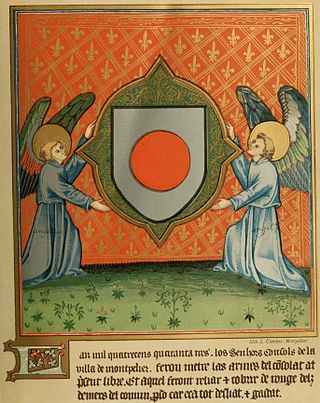
The Liber instrumentorum memorialium is the surviving cartulary of the Lords of Montpellier, the Guilhems (Guillems), and an important source for their history. It was compiled in the early thirteenth century, under the patronage of William VIII, whose lordship is extensively catalogued in it. Its earliest documents date to 1059; its latest to 1204. Its 570 instruments are organised by both type and geography. According to the cartulary's preface, the documents are of two main types: those dealing with the lord's possessions in the Diocese of Maguelonne and those dealing with his possessions elsewhere. Of these 150 record oaths of various sorts, while only 30 are convenientia (conventions). The earliest documents record some agreements of William IV involving the castles of Pouget and Saint-Pons-de-Mauchiens in 1059. The last few documents record the brief independent rule of William VIII's daughter Mary before her marriage to Peter the Catholic brought the lordship into the Crown of Aragon.

Marie of France was a daughter of Philip II of France and his disputed third wife Agnes of Merania. She was a member of the House of Capet.
William III was the Lord of Montpellier from 1025 until his death in 1058. He was the son of William II and husband of Beliardis. His son and successor was William IV. He is the last of the "shadowy" lords of Montpellier, none of whose charters are conserved in the family cartulary, the Liber instrumentorum memorialium.

AimeryIII, known in Spanish as Aimerico Pérez de Lara, was the Viscount of Narbonne from 1194 until his own death. He was a member of the House of Lara. Throughout his reign he had to navigate competing claims of suzerainty over him and until 1223 his reign was dominated by the Occitan War. He participated unenthusiastically on the side of the crusaders, but retained his viscounty, which he passed on to his son.

Ramon I de Montcada or Ramón I de Moncada was a Catalan noble from Tortosa of the House of Montcada and a diplomat in the service of the crown. He was head of the House Moncada and the Seneschal of Barcelona from 1173 to 1181.